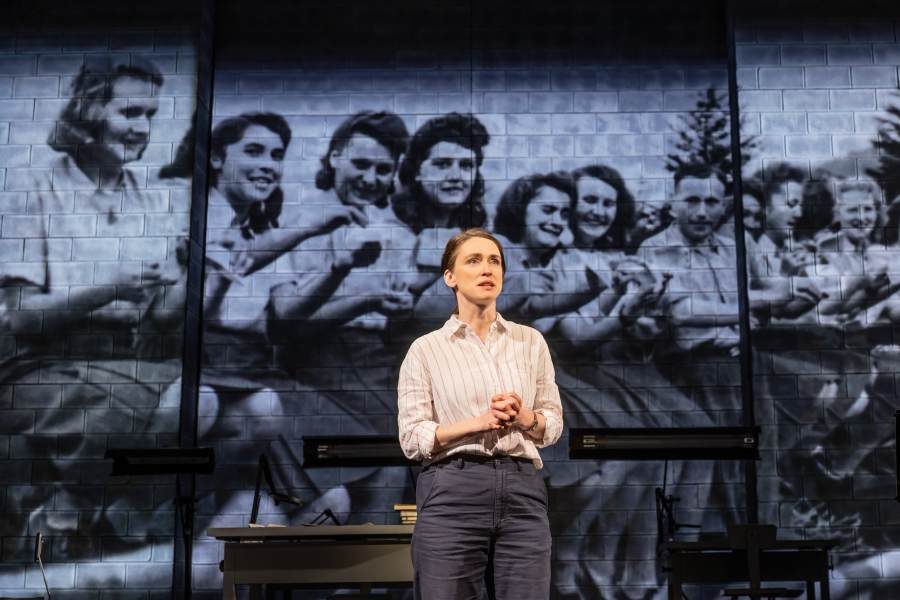

The NYTW production of “Here There Are Blueberries” in a co-production with Tectonic Theater Project, begins with a single object onstage. It is a Leica camera and the narrator explains how it changed culture. And although pictures capture images, we see only what is in the frame, not outside of it.
Moises Kaufman, best known for “The Laramie Project” (2000) read an article about the Hocker album, a photo album that had been donated to The Holocaust Museum in Washington. The album was unique in that it featured 116 photos of Auschwitz, but no victims, only the Nazis engaged in normal pursuits. The photos showed people in ordinary situations, enjoying themselves, and even relaxing at a chalet on the campground as a reward. In fact, the title of the documentary play comes from a series of photographs featuring some of the young women who worked in the administration of the camp. The album gives no sign that the camp contained crematoriums and was the site of the mass extinction of hundreds of thousands of Jews.
Conceived and directed by Kaufman and co-written with Amanda Gronich, “Here There Are Blueberries” is a work of documentary theater. The photo album first comes to the attention of the museum when it is loaned by an American who wishes to remain anonymous. The museum staff sought to find the owner of the album and determined it belonged to Karl Hocker, assistant to Hoss, the commandant of the camp. Through detective work and cross checking other documents and pictures, the Museum archivists determine his identity as well as others featured in the photos.
One quandary is whether the album should be displayed in the Museum. The people in the album look like regular folks doing everyday things. Is it right to show them as normal people in a museum dedicated to honoring and commemorating their victims? .
Elizabeth Stahlmann plays the main archivist, Kathleen Chalfant is Judy Cohen and others and Scott Barrow plays Hocker, the owner of the album. The ensemble of actors play museum researchers as well as some of the Germans. Their performances feel colorless until they switch into roles of Nazis and descendents. Then they even provide sound effects to the photos shown on the screens onstage. (Scenic Design by Derek Lane and Projection Design by David Bengali.)
Although I thought the process was interesting, I found myself strangely unmoved during most of it. However, at the end when they describe the fate of some of the Nazis, with some of them escaping and others resuming their ordinary lives, I was infuriated. However, I was not surprised.
The play is interesting but not powerful because much of it is spent in the investigation -determining who was involved, fleshing out the personalities, but it felt clinical and not personal.
It is easy to compare the play to the recent Oscar winning film “The Zone of Interest” in which The commandant of Auschwitz and his wife build an idyllic life for themselves. The viewer feels the horror of watching a ‘normal' family living right next to the exterminations and concentration camp. Hoss is also a prominent figure on the photo album, but here is merely one more Nazi figure separating his home life from the horrors nearby.
As the archivists’ investigations continue, they begin to publicize their work but also now descendants of the Nazis are contacted. Ironically some of the men went unscathed but the show briefly notes the impacts their deeds have had on their descendants What were they told by their grandfathers? How do they feel about their grandfathers’ participation? So the photo album does have some impact and this was one section which felt personal. The play would have been stronger had Kaufman and Gronich added more to this segment.
Although the play spends more time determining the ownership and figures in the album, the audience is told subtly to be aware of what isn’t shown - that seemingly ordinary people can do monstrous things and yet live lives of normalcy, shutting out the atrocities.
New York Theatre Workshop
79 E. 4th Street
New York, NY